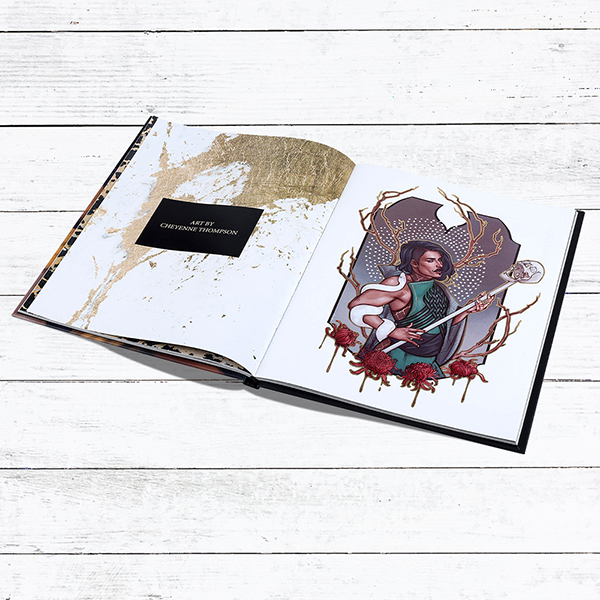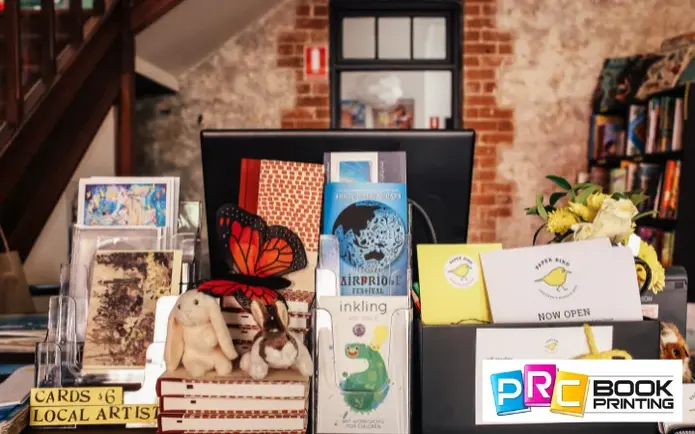A Step-by-Step Guide to Printing a Stunning art book
Discover the Vital Guide to Art Book Printing for Aspiring Artists and Publishers
As an ambitious artist or author, understanding the nuances of art book printing is essential to bringing your vision to life. What are the crucial components you should concentrate on to create a spectacular art book that absolutely represents your job?
Recognizing Different Types of Art Books
When you plunge into the world of art publications, you'll promptly uncover that they come in different types, each customized to various artistic expressions and audiences. Coffee table publications frequently showcase spectacular visuals, best for laid-back surfing, while essays dive deep right into a private musician's work, offering context and insights. If you have an interest in particular art motions, exhibit directories use in-depth paperwork of shows, featuring essays and critiques.
For instructional purposes, art guidebooks and strategy publications assist you with different tools and designs, making them essential for aspiring musicians. Limited edition or musician publications blur the lines between art and literary works, commonly integrating distinct design elements or hand-made features. Recognizing these kinds assists you establish what resonates with you and what may best suit your target market. Each style serves its function, and understanding their distinctions can boost your art book trip.
Selecting the Right Paper and Products
Selecting the appropriate paper and materials can substantially affect the total quality and feeling of your art book. Start by thinking about the kind of artwork you have. For vivid colors and complex details, select a glossy surface or a heavyweight matte paper that boosts visual deepness. If your work features softer tones or appearances, a natural or uncoated paper can give a warm, welcoming touch.
Think concerning the weight of the paper, as well. Thicker options typically provide an even more professional look, while lighter documents can reduce printing expenses. Do not forget the binding materials; a durable cover can shield your web pages and add to guide's visual.
Finally, think about sustainability. Green alternatives are obtaining appeal and can mirror your worths as a musician. By meticulously picking your paper and products, you'll ensure that your art book not only looks terrific however also feels unique in the hands of your viewers.

Choosing the very best Printing Strategies
When it pertains to printing your art book, choosing in between offset and electronic printing can considerably influence your end product. You'll additionally want to take into consideration exactly how paper quality influences the general look of your art work. Let's discover these essential printing strategies to discover the best fit for your task.
Balanced Out vs. Digital Printing
While both countered and electronic printing have their advantages, choosing the best method for your art book can considerably influence the last item. Countered printing supplies high-quality pictures and lively shades, making it ideal for larger print runs. Ultimately, your choice should align with your artistic vision and distribution strategy, guaranteeing that your art book reflects the quality you desire.
Paper Quality Factors To Consider
Selecting the best paper quality can substantially improve the visual charm and tactile experience of your art book. For prints, a shiny coating can make pictures pop, while a matte finish gives a softer, a lot more subtle appearance.
Next, think of the sustainability of your option. Environmentally friendly options are coming to be progressively popular and can attract environmentally-conscious visitors. Ultimately, request examples to see exactly how various papers work with your art work, guaranteeing the last product mirrors your vision completely.
Making Sure Shade Accuracy in Your Prints
To accomplish magnificent prints, you need to focus on color precision from the start. You'll wish to utilize color calibration strategies to confirm your monitor and printer remain in sync. In addition, proofing your work before the final print run can help capture any inconsistencies, guaranteeing your art looks just as you pictured.
Shade Calibration Strategies
Guaranteeing shade accuracy in your prints begins with efficient color calibration methods that aid preserve uniformity in between your digital photos and last printed items. Calibrate your monitor using equipment calibration tools to attain the best color depiction. This verifies that what you see on-screen matches what gets published. Next, choose a color account matched for your printing procedure, like CMYK for print materials. Routinely inspect your printer's setups and keep it to avoid color shifts. It's likewise vital to utilize premium paper that matches your inks, as various surfaces can significantly affect shade result. By constantly using these strategies, you'll boost the general top quality of your art prints and much better convey your artistic vision.
Proofing for Precision
While you could assume your electronic photos are ready for print, proofing is crucial for achieving color precision. Prior to committing to a full print run, constantly request an evidence from your printer.
If modifications are needed, connect clearly with your printer regarding your desired results. Don't think twice to request numerous proofs if essential; it's worth the investment to get it right. Eventually, extensive proofing guarantees that your art work is stood for as you visualized it, maintaining your artistic honesty throughout the printing procedure.

Creating Layouts That Enhance Your Artwork
When you create formats for your art book, it's necessary to consider exactly how each aspect interacts with your artwork. Objective for a balance between visuals and text, ensuring neither outweighes the various other. Use white space tactically; it provides your artwork space to breathe and accentuates its information.
Consider the flow of your book. Set up images in such a way that overviews the visitor's eye, creating a narrative or thematic progression. art book. Vary the dimensions and alignments of your artwork to maintain the format vibrant and interesting
Select typefaces that enhance your artwork without distracting from it. Maintain message concise and relevant, supplying context or insight that enhances the audience's experience.
Finally, test various formats. Print examples to see exactly how the designs translate theoretically, and change as needed. By attentively making your designs, you'll produce a visually appealing art book that reverberates with your target market.
Binding Alternatives for a Professional End Up
Choosing the right binding option can substantially affect the general discussion of your art book. You'll intend to consider both visual appeals and sturdiness when making your option. Popular you can find out more alternatives consist of best binding, which supplies a smooth appearance and is perfect for thicker publications; saddle sewing, perfect for smaller brochures; and Get More Info spiral binding, which enables pages to lay level for easy watching.
If you're aiming for a premium feel, situation binding is an excellent selection, supplying a durable cover and a specialist look (art book). Do not forget the cover product; options like towel, natural leather, or a shiny surface can boost your book's charm
Whatever option you pick, make certain it matches your art work and enhances the reader's experience. Take your time to weigh the advantages and disadvantages of each technique, so your end product shows the quality of your imaginative vision.
Preparing Your Declare Print Preparedness
To guarantee your art book is print-ready, you'll need to pay very close attention to file prep work. Beginning by setting your paper dimension to match your preferred print measurements. Use high-resolution pictures-- 300 DPI is the requirement-- to identify sharp, lively visuals. Transform your files to CMYK setting, as this color room is best for printing. Do not forget to consist of bleed locations, generally an added 0.125 inches around your pages, to avoid any kind of white edges after cutting.
Additionally, install your typefaces or convert message to lays out to prevent any kind of typeface problems. Save your job in a PDF style, as this is the most approved file type for printers. Confirm your apply for any type of typos or format errors, as changes can be pricey after the fact. Take into consideration producing an evidence to evaluate prior to the final print run. Following these actions will certainly aid you accomplish a refined, expert art book.
Regularly Asked Inquiries
What Is the Ordinary Expense of Printing an Art Book?
The standard cost of publishing an art book varies, however you can expect to pay anywhere from $5 to $20 per copy, depending on aspects like dimension, paper high quality, and printing volume.
Just How Can I Locate a Reliable Printing Business?
To discover a reliable printing firm, start by investigating on-line evaluations and visit their website asking other musicians for suggestions. Contrast quotes, examine portfolios, and interact your needs plainly to assure they understand your vision and quality expectations.
What Is the Common Turn-around Time for Printing?
The regular turnaround time for printing differs but typically varies from one to 4 weeks. Aspects like project complexity and quantity can influence this. Always confirm with your picked printer for certain timelines and assumptions.
Can I Print My Art Book in Limited Quantities?
Yes, you can definitely print your art book in minimal quantities. Numerous printing firms use short-run alternatives, permitting you to produce just the number you require, making it less complicated to take care of expenses and supply.
What Lawful Considerations Should I Know for My Art Book?
You must take into consideration copyright, licensing agreements, and design releases when creating your art book. Make sure you have the right to make use of all photos and text, shielding yourself from potential legal problems later on.